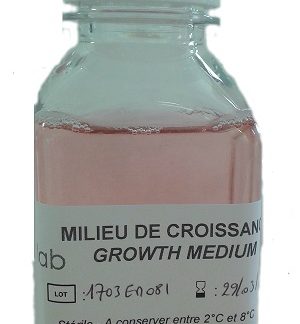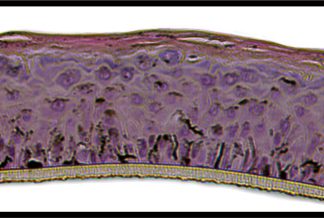Human Pigmented Epidermis
 DESCRIPTION
DESCRIPTION
The Reconstructed Human Pigmented Epidermis (RHPE) consists of normal human-derived keratinocytes and melanocytes cultured for 10 days at the air-liquid interface, resulting in a multilayered epidermal equivalent in vitro wich is histologicaly similar to the human epidermis including the pigmentation system.
Moreover, the functionality of the formed pigmentation system is demonstrated by a transfer of melanin from melanocytes to the surrounding keratinocytes, which is required for skin photo-protection. Depending on the customer needs, the Sterlab – RHPE can be generated employing melanocytes from donors with different Fitzpatrick phototypes.
Those, models are available with a phototype ranging from type II (light pigmentation) to type VI (heavy pigmentation).
The RHPE is characterized by a high barrier function and metabolic activity and can be employed for efficacy testing e.g. in vitro pigmentation or depigmentation studies. To ensure global availability, models are transported on an agarose based solidified medium mixed with Sterlab growth medium.
RECOMMENDED MEDIUM
Growth Medium Pigmented Epidermis (Ref: 205MILEM – 125ml, 250ml or 500ml).
PRODUCT CHARACTERIZATION
Each production batch is provided with quality controls values and recommendations such as storage conditions, RHPE instruction for use, batch number and origin, histology, cell viability, barrier function integrity, absence of Hepatitis B, Hepatitis C, HIV, and Mycoplasma.
PRODUCT USE
The Sterlab RHPE model are for in vitro research use only and not for diagnostic or clinical applications.
APPLICATIONS
The RHPE model can be employed to test the pigmentation or depigmentation efficacy of chemicals, cosmetics, and pharmaceutical compounds. The phototypes II and IV models are generally used to assess the induced-pigmentation by UV and/or by chemical modulators. The phototype VI model is mainly used to assess the whitening potential of chemicals or skin care formulations.
Due to a dry surface, the RHPE model allows realistic topical application scenarios for a broad range of liquid and solid substances. Moreover, a systemic application can be simulated by applying test substances into the culture medium.
2 résultats affichés
-

Growth medium Pigmented Epidermis
45,00€ – 180,00€ HT Choix des options -

Reconstructed Human Pigmented Epidermis
75,00€ – 1650,00€ HT Choix des options
2 résultats affichés

